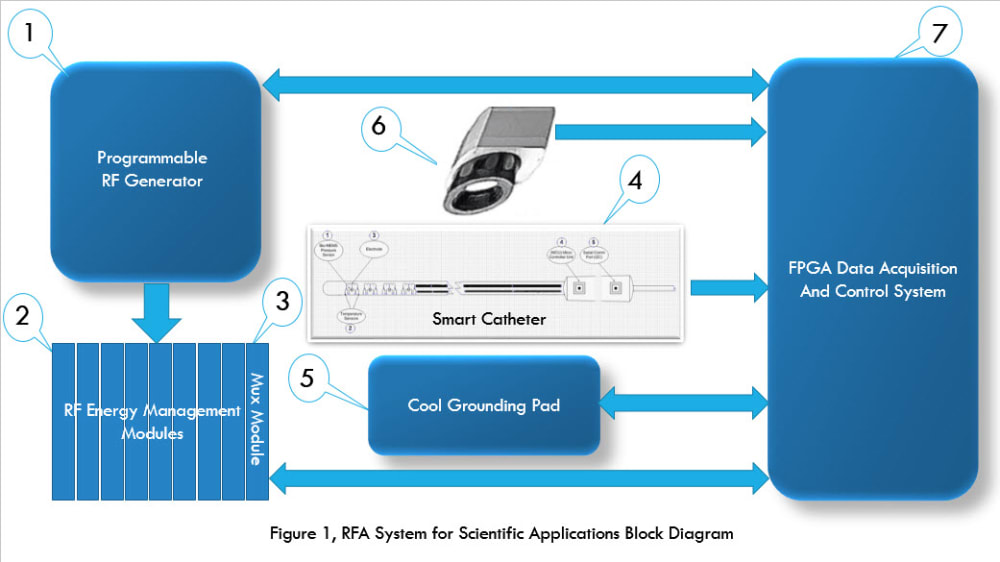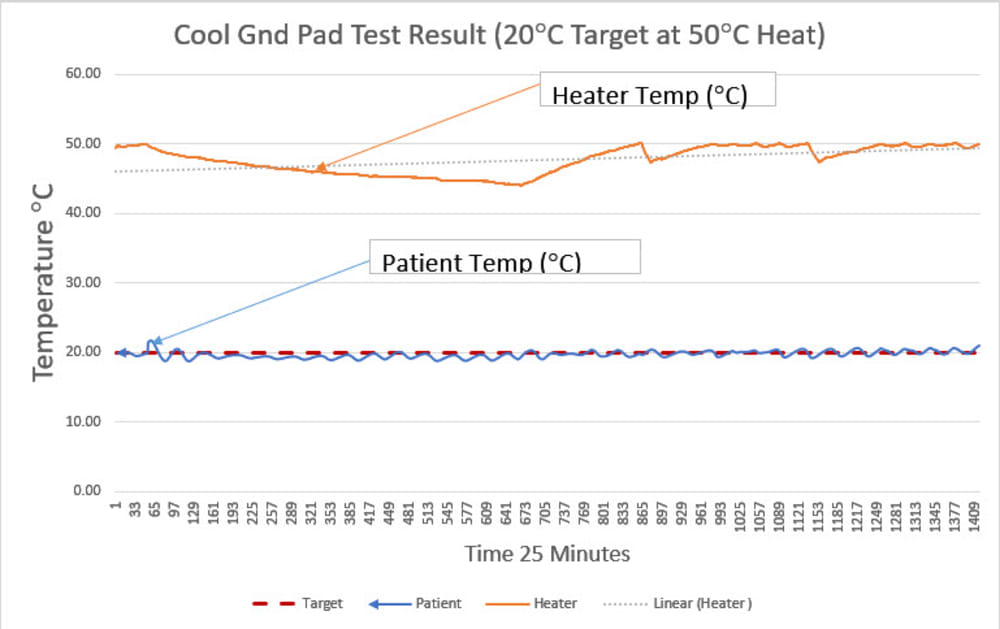Abstract
Radiofrequency ablation (RFA) is a medical procedure that has increased in use in recent years for new medical applications exponentially. Some examples of RFA procedures are elimination of cardiac arrhythmias, destruction of cancerous tumors, pain management, dysfunctional tissue diseases and many more.
Some of the risks factor of RF ablation include:
- Heat damage to structures adjacent to the target
- Damage to surrounding blood vessels and nerves
- Muscular tissue damage.
- Heart valve damage
- Worsening arrhythmia
- Blood clots
- Stroke or heart attack
Solution
The novel idea of the “RFA for Scientific Applications” is based on decade of R&D and hands on experiment evaluating various types of RF generators and ablation techniques to eliminate the side effects and risk factors associated with technology and to improve those currently employed devices in the market.
Systematic Highlights:
The technology is comprised of the following sub systems (Figure 1).
1: Programmable RFA Generator with following features,
- Programmable frequency 380-480KHz
- Operational modes: Temperature, Power, Impedance, pulse or combination of all
- Programmable power control from fraction of a watt up to 150 watts
- Programmable Impedance and ablation time
- Parameter monitoring including, Power, Impedance, Temperature and Pulse
- Mono or bipolar operation
- Ease of graphical programing in LabVIEW FPGA technology as well as MATLAB or other scientific programming languages
- Elaborate set of data collection/playback and analysis utilities
2: RF Energy Management Modules
These modules can handle and manipulate up to 50W of RF energy using feedback algorithms such as PID, Fuzzy logic, PWM or user developed mathematical algorithms for a single electrode of any type of catheters. They also accept any type of temperature probes for monitoring the tissue temperature. Up to 8 modules can be cascaded via a backplane for catheters with higher number of electrodes. They also can monitor any physiological signals such as ECG during ablation procedures.
3: Catheter’s Electrodes Multiplexing module.
A multiplexing module to increase the number of controllable electrodes up to 32.
4: Smart Catheter
The conceptual design here is based on multi-point electrode which monitors temperature and tissue contact quality using Bio-MEMS ultra-miniature pressure sensor embedded on the opposite side of the electrode.
https://contest.techbriefs.com/2012/entries/medical/2766
5: Cool Grounding Pad
Cool Grounding Pad Eliminates Patient Skin Burns During Electrosurgical and RF Ablation Procedures. A specially designed grounding plate uses integrated heat removal components. Figure 2, is a sample of the test result data collected at 50-degree Celsius heat removed from the ablation ground plane contacting the tissue site.
https://www.medicaldesignbriefs.com/component/content/article/mdb/tech-briefs/38060%3E
6: RFA Thermal Imaging Camera
Is based on the medical grade thermal imaging (thermography) infrared camera and associated software. This system allows for real-time monitoring and analysis of the procedure during the ablation process. The data collected by the camera is fed back to the programmable generator to calculate the optimal adjustment and control of the RF energy and prevention of tissue damage.
https://contest.techbriefs.com/2019/entries/medical/9819
7: Data Acquisition and System Controller
National Instruments FPGA data acquisition technology and the LabVIEW software.
Video
Like this entry?
-
About the Entrant
- Name:Michael Nasab
- Type of entry:individual
- Software used for this entry:National Instruments LabVIEW FPGA programming language
- Patent status:none





